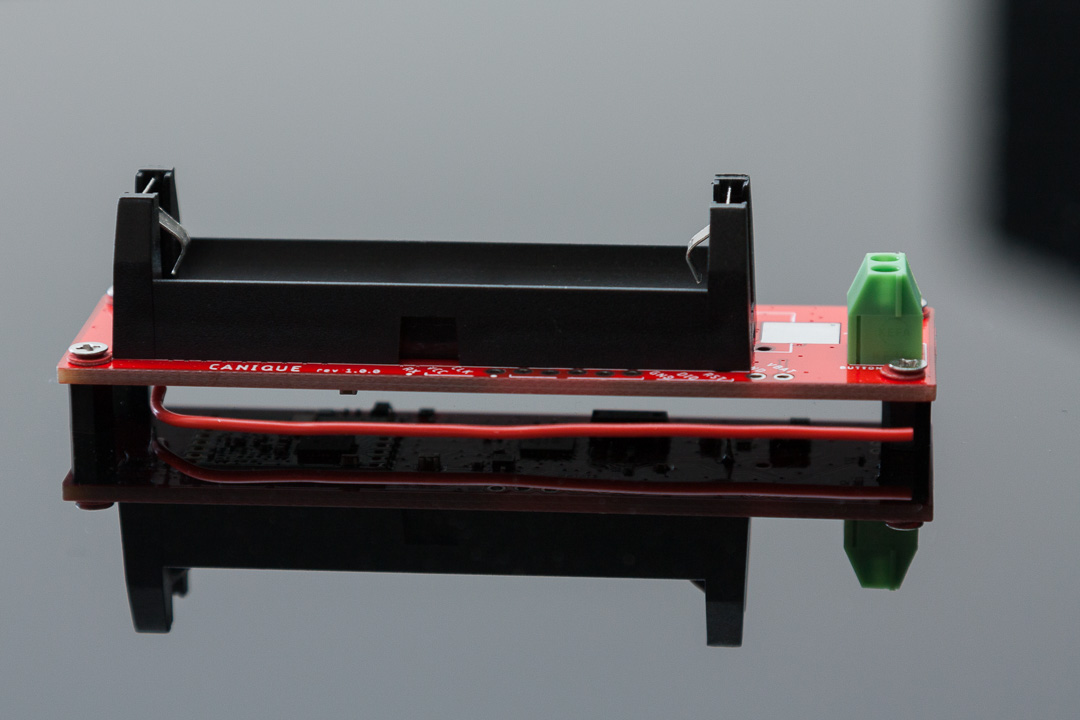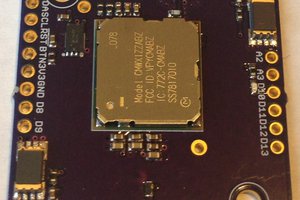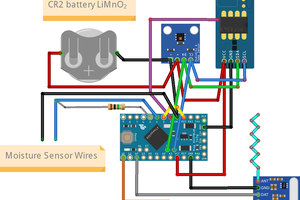Use Cases
Reed Sensor
- Count how many times a door is opened
- Detect a left open door/window
- Monitor a drawer, window, refrigerator door etc.
- Detect intrusion into an area by attaching a trip wire to the reed contacts
- Use as a call button - to call a taxi from a taxi station nearby e.g.
- Use like an Amazon Dash Button to automate a task when a button is pressed: ordering something, controling a distant relay that listens for MQTT messages, controling some home automation device etc.
Motion Sensor
- Detect a knock on a door
- Detect opening of a window
- Detect whether a machine (e.g. washing machine, industrial appliance) is working or not *
- Detect movement of an elevator *
* could be supported in future firmware
Temp./Humidity/Pressure sensor
- Calculate absolute humidity
- Weather forecast
- Measure elevation level
- Find out which floor an elevator is on
- Use data to control air ventilation or heating/cooling
- Warn about mould on high relative humidity levels
Battery Life vs Precision vs Transmission Interval

A "trick" when trying to achieve a low average power consumption is to transmit infrequently: say every 5 minutes. This sacrifices data density for power efficiency. This easy route has not been chosen in this project. The transmission interval is fixed at 0.5 minutes. Note that the sensor could even achieve a higher battery lifetime if the transmission was based on a minimum delta between 2 measured datapoints, e.g. if we changed the code to only transmit if the temperature has changed by at least 0.05°C since the last transmission (same for pressure/humidity) then we might save some substantial battery juice because the transmission would happen more infrequently. Please also note that in such a case waiting for an acknowledgment from the receiver is a good idea because the "last transmission" from the view of the sender is not necessarily the "last transmission" from the view of the receiver. Missed packets can always occur.
A different approach to increasing battery lifetime is to keep data imprecise. The less bytes you send, the faster you'll be finished. The faster you're finished, the less energy you've consumed. Sending the temperature without decimals e.g. would fit in 1 single byte. Canique Ambience does not go this route either.
Temperature (°C) is transmitted with 2 decimal places, relative humidity (%) is transmitted with 2 decimal places, barometric pressure (Pascal) is transmitted with 1 decimal place. So: no sacrifice here either. A compression is applied to the transmitted data, though, to save some valuable battery power.
We already mentioned that a fast transmission saves power. Now you could be tempted to transmit at maximum speed which in the case of the used radio chip is 300kb/s using FSK modulation. The drawback of this approach is that you're trading off speed for range. Higher speed means lower sensitivity, means lower range.
The sensor introduced here transmits at 25kb/s, so: range has not been sacrificed either.
Battery Life
This is a comparison table for the estimated minimum battery life assuming max. transmission power (+13dBm), a transmission interval of 30 seconds and a battery self discharge of 15% over the entire lifetime.
Note that with lower transmission power, the battery life time will increase.
| Measurement | Battery | Min. Batt. Life |
| Temperature, Rel. Humidity, Pressure | Energizer Ultimate Lithium 3000 mAh | 13 years |
| Temperature, Rel. Humidity, Pressure | Energizer Ultimate Lithium 3000 mAh min. TX power (-18 dBm) | 20 years |
| Temperature, Rel. Humidity, Pressure | Alkaline 2800 mAh | 10 years |
| Temperature, Rel. Humidity, Pressure, Knock detection | Energizer Ultimate Lithium 3000 mAh | 10 years |
| Temperature, Rel. Humidity, Pressure, Knock detection | Energizer Ultimate Lithium 3000 mAh min. TX power (-18 dBm) | 13 years |
| Temperature, Rel. Humidity, Pressure, Knock detection | Alkaline 2800 mAh | 9 years |
| Temperature, Rel. Humidity, Pressure, Tilt detection | Energizer Ultimate Lithium 3000 mAh | 13 years |
"Knock detection"...
Read more » canique
canique






 karpour
karpour
 Kris Winer
Kris Winer
 Christoph
Christoph
When will this be available for purchase?